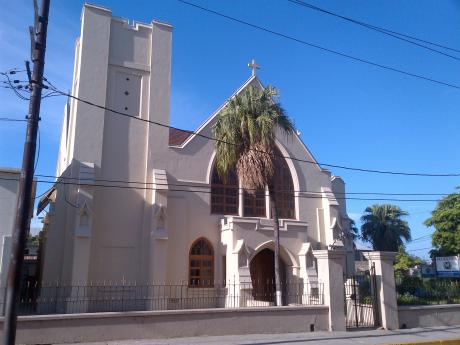The Moravians in Jamaica 1754-1834 Part 1 - Growth and decline
The Moravian Church in Jamaica might not be one of the most popular, but Moravian missionaries have been coming here since December 1754. The first three to arrive at what is now Black River, St Elizabeth, were Zacharias Caries, Thomas Shallcross, and Gottlieb Haberecht.
The Unity of the Brethren, as it is known, became a church in Germany in 1457, but, for many reasons, including years of persecution, it was not able to firmly plant itself. In 1727, it was given a base on the property of Count Nicholas Von Zinzendorf.
The brethren's interest in Jamaica was motivated by absentee plantation owners William Foster and Joseph Foster-Barham, "who became disturbed in their conscience for the spiritual condition of the slaves on their estates in Jamaica", Lloyd A. Cooke writes in The Story of The Jamaica Missions.
The brothers approached the Moravian Church in England, which sent the missionaries to be attached to the Fosters' plantations at Bogue, Two Mile Wood, Elim, and Lancaster districts, which still exist in St Elizabeth today, as well as Mesopotamia in Westmoreland.
The arrival of Caries, Shallcross and Haberecht was the beginning of decades of deaths, severe challenges, and growth for the Moravian Church in Jamaica between 1754 and 1834, which this three-part series brings forth from the shadows of history.
The beginning of the work of the missionaries was far from glorious. They were instantly detested and distrusted by the overseers. The nonchalance from the enslaved Africans was not encouraging either, but by 1756, they were able to baptise 77 of them.
DONATION OF LAND
In 1755, when Shallcross died, the Foster brothers gave the missionaries 700 acres of land near Santa Cruz, where they built a mission station called Carmel, near swamp lands. It was also to become an estate where the Moravians held enslaved Africans. Carmel later evolved into a graveyard for missionaries.
The leadership of the mission stations changed many times, starting with the arrival of Christian Rauch and Charles Shulze in 1756, and the withdrawal of Caries and Haberecht in 1759.
Rauch died in 1763, and when Frederick Schlegel arrived in 1764. The stations in operation then were at Carmel, Bogue and Mesopotamia and a few outstations.
Schlegel died six years after arriving.
One Samuel Church came in 1787, but had to return in 1792. By 1799, the Moravians had baptised 938, which was way below expectation. It was a period of stagnation for the missionaries, and by 1808, the number of missionaries stood at two - Thomas Ellis at Bogue and John Lang at Carmel.
Between 1815 and 1824, there was a rise in the number of converts and mission stations. While Lang's work is credited for the growth in the number of converts between 1809 and 1823, something else was going on. He was at Carmel from 1805-1818, during which it is said Carmel became a profitable estate.
This growth occurred at a time when George Lewis, a free African, travelled to the USA and came back a Baptist convert. In his evangelism, he incorporated many elements of African spirituality and religious rituals, which other Africans could relate to. Lang travelled around with Lewis, who did not become a member of the Moravian Church. They eventually went their separate ways.
Lang died at Carmel in June 1818 in his mid 40s. The first church building was erected at New Eden in 1820. Death-ridden (as is) Carmel was closed in 1823, and an old plantation at Fairfield was bought. Buildings were converted to a chapel and a schoolhouse and Fairfield became the Moravians' headquarters, whose first missionary was John Ellis, arriving in 1824.
The name Carmel was resurrected when New Carmel Chapel was opened on a hill at Hopeton in Westmoreland. It was built on land donated by a Christian owner of enslaved Africans, Henderson Scott, who eventually severed ties with that station.
Mesopotamia station in Westmoreland closed in 1834, four years before the abolition of slavery. Lack of interest from the enslaved, and support from the masters made it ineffective. And as was the case at Old Carmel, death tightly embraced and strangled the soul seekers.

